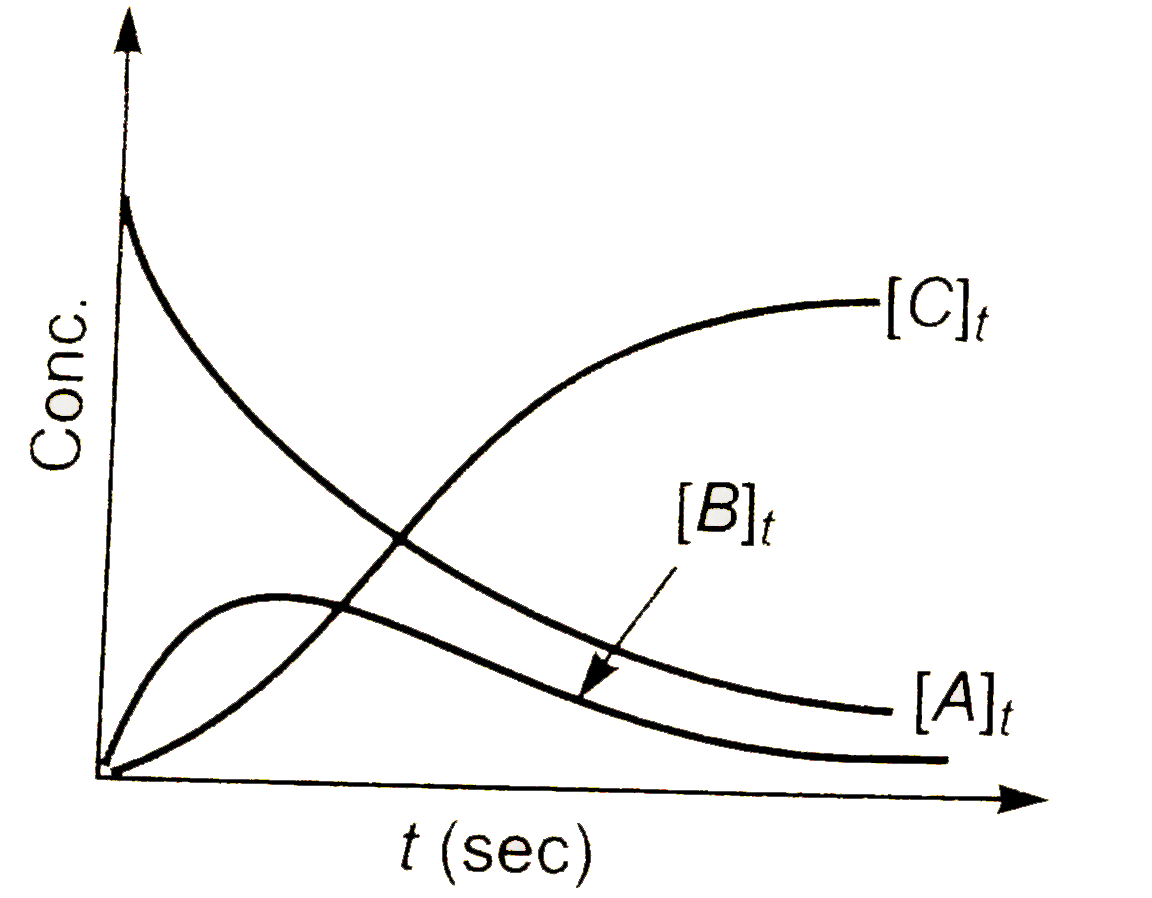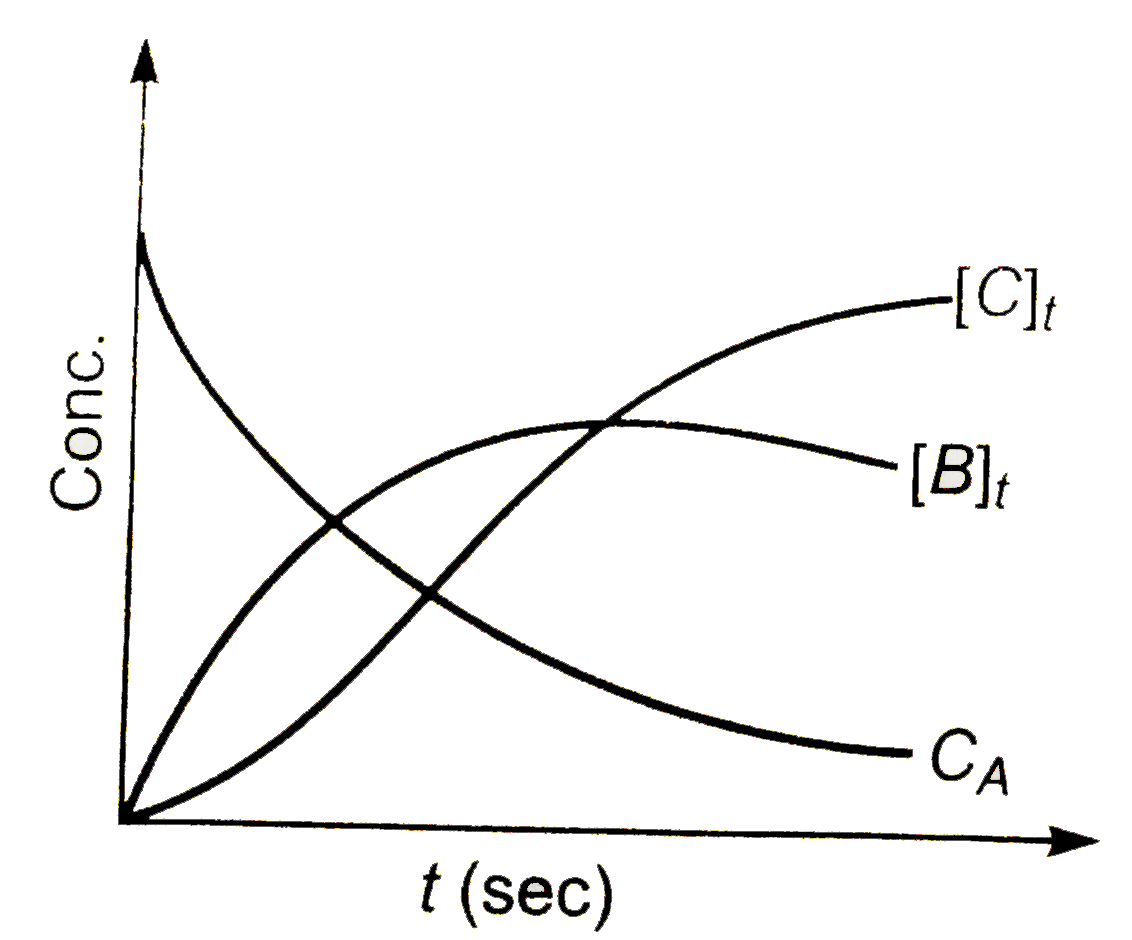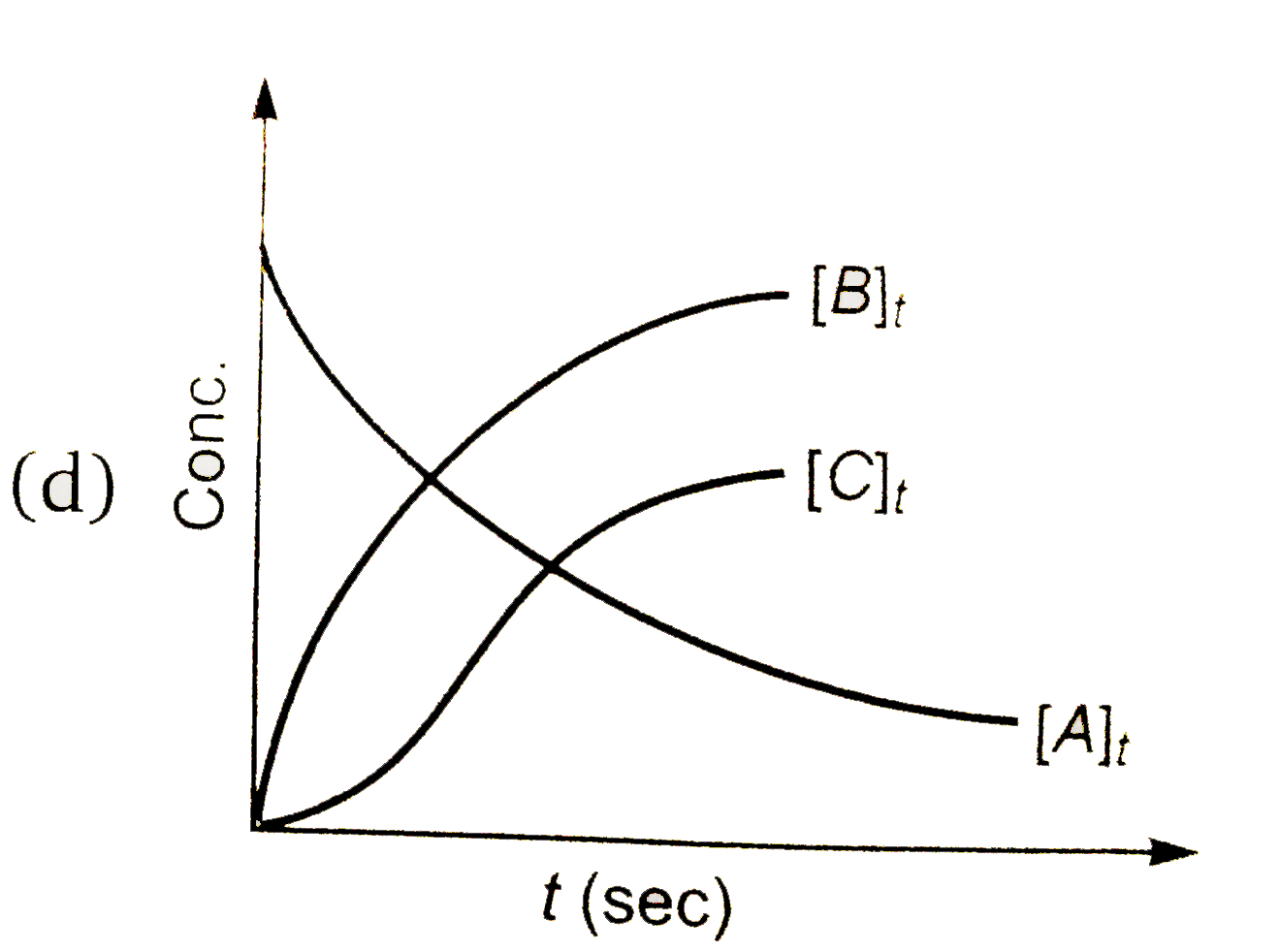Two consecutive irreversible fierst order reactions can be represented by
The rate equation for A is readily interated to obtain
, and
At what time will B be present in maximum concentration ?
In
In
none of these
The correct Answer is:B
To find the time at which the concentration of B is at its maximum in the consecutive irreversible first-order reactions represented by:
Ak1→Bk2→C
we can follow these steps:
Step 1: Write the expression for the concentration of B
The concentration of B at time t is given by:
(B)t=k1(A)0k2−k1(e−k1t−e−k2t)
Step 2: Differentiate the concentration of B with respect to time
To find the time at which B is at maximum concentration, we need to differentiate (B)t with respect to time t and set the derivative equal to zero:
d(B)dt=0
Differentiating (B)t:
d(B)dt=k1(A)0k2−k1(−k1e−k1t+k2e−k2t)
Step 3: Set the derivative equal to zero
Setting the derivative equal to zero gives us:
−k1e−k1t+k2e−k2t=0
Rearranging this equation, we have:
k1e−k1t=k2e−k2t
Step 4: Divide both sides by e−k2t
Dividing both sides by e−k2t:
k1e(k2−k1)t=k2
Step 5: Solve for t
Taking the natural logarithm of both sides:
ln(k1)+(k2−k1)t=ln(k2)
Rearranging gives:
(k2−k1)t=ln(k2)−ln(k1)
Thus,
t=ln(k2)−ln(k1)k2−k1
This can also be expressed as:
t=1k2−k1ln(k2k1)
Final Answer
The time at which B is present in maximum concentration is:
tmax=1k2−k1ln(k2k1)
---
Topper's Solved these Questions
- BOOK - NARENDRA AWASTHICHAPTER - CHEMICAL KINETIC & NUCLEAR CHEMISTRYEXERCISE - Level 1 (Q.3 To Q.32)2videos
CHEMICAL KINETIC & NUCLEAR CHEMISTRY
- BOOK - NARENDRA AWASTHICHAPTER - CHEMICAL KINETIC & NUCLEAR CHEMISTRYEXERCISE - Level 1 (Q.33 To Q.62)3videos
CHEMICAL KINETIC & NUCLEAR CHEMISTRY
- BOOK - NARENDRA AWASTHICHAPTER - SURFACE CHEMISTRYEXERCISE - Level 3 - Assertion - Reason Type Questions1videos
SURFACE CHEMISTRY
Similar Questions
Knowledge Check
- Question 1 - Select One
Two consecutive irreversible fierst order reactions can be represented by
Ak1−−→Bk2−−→C
The rate equation for A is readily interated to obtain
[A]t=[A]0.e−k1t , and [B]t=k1[A]0k2−k1[e−kt1−e−kt2]
Select the corret statement for given reaction:AA decreases linearlyBB rise to a max. and then constantCB rises to a max and the fallsDThe slowest rate of increases of C occuring where B is max - Question 2 - Select One
Two consecutive irreversible fierst order reactions can be represented by
Ak1−−→Bk2−−→C
The rate equation for A is readily interated to obtain
[A]t=[A]0.e−k1t , and [B]t=k1[A]0k2−k1[e−kt1−e−kt2]
If k1 and k2 both are almost same then which graph is most suitable ?Agraph ABgraph BCgraph CDgraph D - Question 3 - Select One
Two consecutive irreversible fierst order reactions can be represented by
Ak1−−→Bk2−−→C
The rate equation for A is readily interated to obtain
[A]t=[A]0.e−k1t , and [B]t=k1[A]0k2−k1[e−kt1−e−kt2]
When k1=1s−1 and k2=500s−1 , select most appropriate graphA B
B C
C D
D
A consecutive reaction, AK1−−→BK2−−→C is characterised by:
View SolutionFor the consecutive unimolecular first order reaction Ak1−−→Rk2−−→S, the concentration of component A, CA at any time t is given by
View SolutionFor the consecutive unimolecular-type first-order reaction Ak1−−→Rk2−−→S, the concentration of component R, CR at any time t is given by -
CR=COAK1[e−k1t(k2−k1)+e−k2t(k1−k2)]
if CA=CAO,CR=CRO=0 at t=0
The time at which the maximum concentration of R occurs is -View SolutionIn the series reaction
AK2−−→BK2−−→CK2−−→D , if K1>K2>K3 then the rate determing step of the reaction isView SolutionA reaction A+B→D+E takes place as
A+Bk1−−→2C
C+Bk2−−→2D
C+Ak3−−→2E
The rate of disappearance of C is given byView Solution
